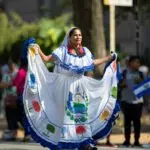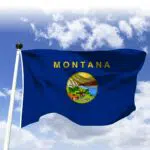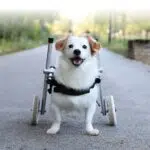Dystonia Awareness Week is observed from May 3 to 11 each year. This is a week dedicated to raising awareness about dystonia, a neurological hyperkinetic movement disorder. People suffering from dystonia experience frequent and repetitive muscle contractions, causing them to twitch, twist, and otherwise move uncontrollably, or become fixed in rigid positions. Any part of the body may be affected by the muscle contractions caused by dystonia. The disorder looks like muscle tremors, and treatments have to be highly customized to each specific patient to be effective. The causes of dystonia are varied.
History of Dystonia Awareness Week
Dystonia Awareness Week is set aside to raise awareness about dystonia, a complex neurological disorder that can affect men, women, and children of any age.
Dystonia is a disorder where the basal ganglia are affected. This is a part of the brain that is involved in enabling coordinated movement. Because the basal ganglia are affected, people suffering from dystonia find that they experience involuntary muscle contractions that cause repetitive and uncontrollable movements.
Those who suffer from dystonia may twitch, twist or tremble uncontrollably, or find themselves contorting into uncomfortable positions. Often, physical activity or exercise tends to aggravate dystonia symptoms, as the basal ganglia become irritated.
There are several different causes of dystonia. While the condition is hereditary, it might also be caused by illnesses, drugs (including pharmaceutical drugs), trauma related to birth, physical trauma caused by accidents, infections, or poison.
Treatment for dystonia varies from person to person. Depending on the type of dystonia that the person suffers from, the treatment might vary from physical therapy and other assistive therapies to botox injections or surgical treatments, like deep brain stimulation.
Other medications that have helped people with dystonia include anti-Parkinson’s agents and muscle relaxants. It is usually a combination of therapies and treatments that bring relief, rather than any particular medication. Dietary and lifestyle changes also help some individuals suffering from dystonia, especially younger individuals. However, because of the nature of the disease, there is no one particular diet that works better than others.
Dystonia Awareness Week timeline
Marcus Walter Schwalbe is the first to identify dystonia as an individual disorder that is separate from other movement disorders.
The gene responsible for early-onset generalized dystonia, called DYT1, is localized to chromosome 9.
Dystonia experts meet in Florence to classify the different types of dystonia that have been observed and recorded.
With more people suffering from the disorder, Dystonia Awareness Week is organized to sensitize people to the symptoms of this disorder.
Dystonia Awareness Week FAQs
What color represents dystonia?
People often wear a blue and silver pin during Dystonia Awareness Week.
Does dystonia just go away?
Dystonia sometimes disappears completely but the reasons have not yet been identified.
What muscles does dystonia mostly affect?
While all muscles can be affected by dystonia, the neck muscles are most commonly affected.
How to Observe Dystonia Awareness Week
Learn all about dystonia
The main aim of Dystonia Awareness Week is to spread awareness about the disorder. Start by learning more about the condition.
Spread the word
Talk to people about dystonia, especially about its symptoms and effects. You never know who you might help with the information.
Attend a fundraiser
During this week, lots of people organize walkathons and fundraisers for people with dystonia. The idea behind these events is to raise awareness and money, so why not get involved and make a difference?
5 Important Facts About Dystonia
It probably existed in ancient times
The history of dystonia dates back to the Ancient Greeks, who recorded symptoms similar to those experienced by those suffering from dystonia.
New York hosted the first International conference
The 1975 conference on dystonia, held in New York, recognized all other types of dystonia that were not early onset.
People thought it was a psychiatric disorder
Until the 1900s, researchers saw dystonia as a psychiatric disease rather than an organic disease.
It wasn’t defined until 1984
The modern definition of dystonia took a long time to be established, even after the condition was identified as an independent disorder.
There are various types of dystonia
Dystonia is sometimes referred to as a collection of disorders because there are so many different varieties.
Why Dystonia Awareness Week is Important
We want to share knowledge
We believe that everyone should know enough about such disorders to be able to recognize the symptoms in themselves or their loved ones. This knowledge could change someone’s life if a friend or a family member were to start suffering from dystonia.
We want to raise funds
Treatments for dystonia can get expensive and there is no definitive cure. We want to do our bit to ensure that people suffering can find some relief.
We acknowledge people with the disorder
It’s not easy to live with a complex disorder like dystonia which needs elaborate and customized treatment. We want to acknowledge the suffering of people living with the disease.
Dystonia Awareness Week dates
| Year | Date | Day |
|---|---|---|
| 2026 | May 3–11 | Sunday–Monday |
| 2027 | May 3–11 | Monday–Tuesday |
| 2028 | May 3–11 | Wednesday–Thursday |
| 2029 | May 3–11 | Thursday–Friday |
| 2030 | May 3–11 | Friday–Saturday |






































